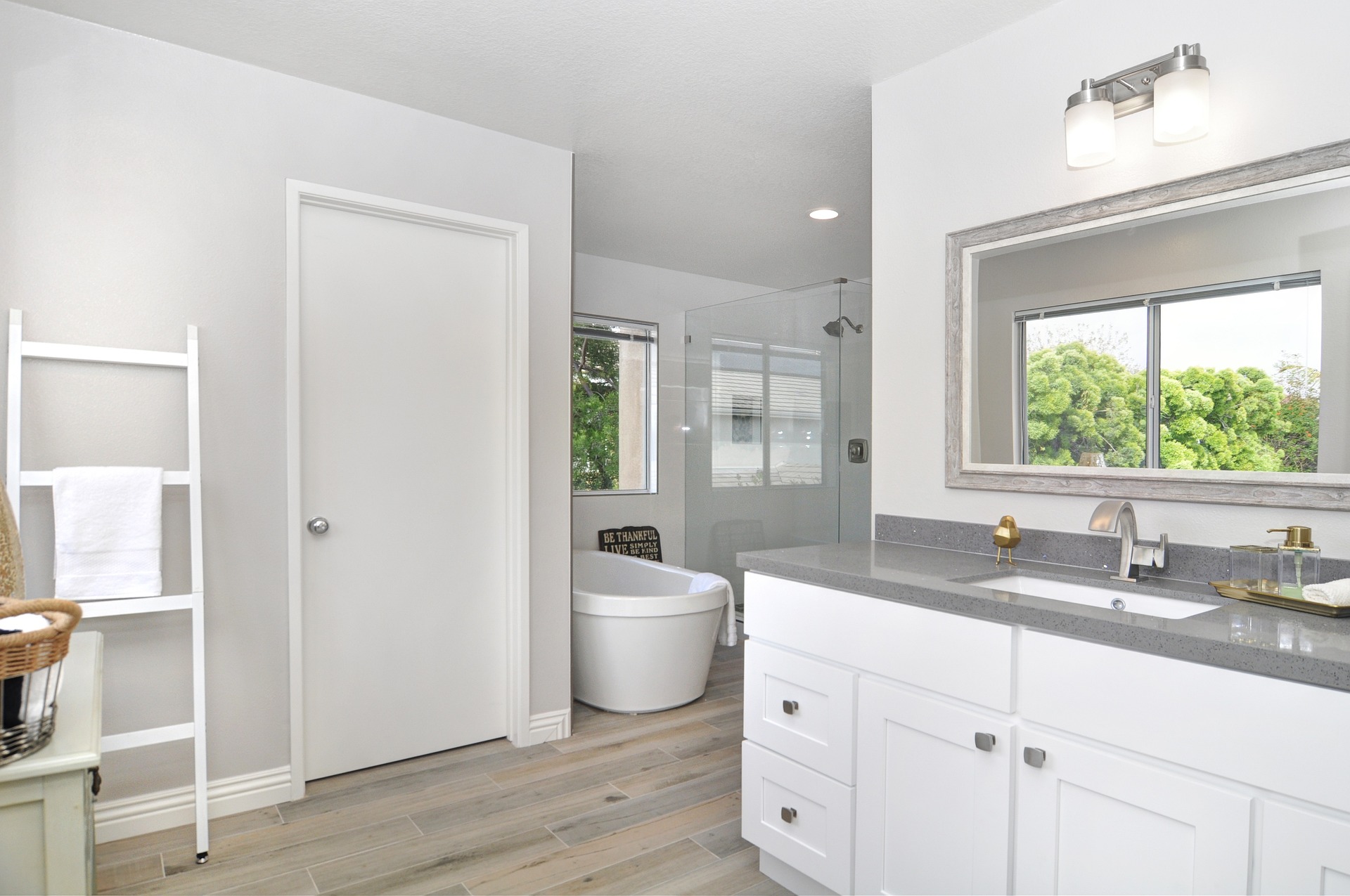Transform Bathroom Comfort with the Right Color & Expert Remodeling
The right color is key to a comfortable bathroom, but a truly transformative space requires a expert touch. This guide explores how color choice, combined with quality materials and layout, creates the bathroom of your dreams. Let's find your perfect match and see how the professional remodeling service can turn these ideas into your new reality.

Understanding the Impact of Bathroom Remodeling Color
Color selection plays a crucial role in bathroom design, influencing mood, perceived space, and overall ambiance. Light hues such as soft blues, greens, and neutrals create a calming atmosphere while making smaller bathrooms appear larger. Warmer tones like beige, taupe, and cream add coziness and sophistication. When planning your bathroom remodeling project, consider how natural and artificial lighting interacts with your chosen palette. North-facing bathrooms benefit from warmer shades to compensate for cooler light, while south-facing spaces can handle cooler tones. Accent walls, tile patterns, and fixture finishes should complement your primary color scheme to create visual harmony. Professional designers often recommend the 60-30-10 rule: 60 percent dominant color, 30 percent secondary color, and 10 percent accent color for balanced, cohesive results.
What to Expect from a Bathroom Remodeling Service
A comprehensive bathroom remodeling service encompasses design consultation, material selection, demolition, plumbing and electrical work, installation, and finishing touches. Reputable contractors begin with detailed assessments of your existing space, discussing your vision, budget, and functional requirements. They provide design options that maximize space efficiency while incorporating your style preferences. Professional services handle permit acquisition, coordinate subcontractors, and ensure all work meets local building codes. Expect transparent communication throughout the project, including timelines, potential challenges, and regular progress updates. Quality contractors stand behind their work with warranties covering both labor and materials. They also address unexpected issues like water damage or outdated plumbing discovered during demolition, providing solutions that keep your project on track.
Planning Your Bathroom Remodeling Project
Successful bathroom remodeling requires careful planning and realistic expectations. Start by defining your priorities: Do you need improved functionality, updated aesthetics, increased storage, or better accessibility? Create a detailed wish list, then categorize items as must-haves versus nice-to-haves. Research current design trends, but focus on timeless elements that maintain appeal and value. Measure your space accurately and consider how layout changes might improve traffic flow and usability. Establish a realistic budget that includes a 10-20 percent contingency for unexpected expenses. Timeline planning is equally important—most bathroom remodels take four to six weeks, though extensive renovations may require longer. Prepare for temporary inconvenience by arranging alternative bathroom access and protecting adjacent rooms from dust and debris.
Finding a Bathroom Remodel Service Near You
Locating qualified bathroom remodel services in your area requires thorough research and due diligence. Start by seeking recommendations from friends, family, and neighbors who have completed similar projects. Online review platforms provide insights into contractor reliability, workmanship quality, and customer satisfaction. Verify licensing, insurance, and bonding status through your state’s contractor licensing board. Request detailed written estimates from at least three contractors, comparing scope of work, materials specified, timelines, and payment schedules. Interview potential contractors about their experience with projects similar to yours, ask for references, and view completed work when possible. Local services offer advantages including familiarity with regional building codes, established relationships with area suppliers, and convenient accessibility for consultations and problem-solving. Proximity also facilitates easier oversight and communication throughout your project.
Cost Considerations for Bathroom Remodeling Projects
Bathroom remodeling costs vary significantly based on project scope, material quality, labor rates, and geographic location. Understanding typical price ranges helps you budget effectively and evaluate contractor estimates. Minor cosmetic updates including paint, fixtures, and hardware typically range from $3,000 to $10,000. Mid-range remodels involving new tile, vanity, toilet, and shower fixtures generally cost between $10,000 and $25,000. Upscale renovations with custom cabinetry, premium materials, and layout changes often exceed $25,000, with luxury projects reaching $50,000 or more. Labor typically represents 40-50 percent of total costs, while materials account for the remainder. Regional variations affect pricing—urban areas with higher living costs generally see elevated contractor rates compared to rural locations.
| Project Scope | Typical Cost Range | Key Elements Included |
|---|---|---|
| Cosmetic Update | $3,000 - $10,000 | Paint, fixtures, hardware, minor repairs |
| Mid-Range Remodel | $10,000 - $25,000 | New tile, vanity, toilet, shower, flooring |
| Upscale Renovation | $25,000 - $50,000 | Custom cabinetry, premium materials, layout changes |
| Luxury Transformation | $50,000+ | High-end finishes, structural modifications, spa features |
Prices, rates, or cost estimates mentioned in this article are based on the latest available information but may change over time. Independent research is advised before making financial decisions.
Maximizing Value Through Smart Design Choices
Strategic design decisions enhance both functionality and return on investment. Focus on improvements that appeal to broad audiences: neutral color palettes, quality fixtures, adequate storage, and efficient layouts. Invest in water-efficient toilets, faucets, and showerheads to reduce utility costs and appeal to environmentally conscious buyers. Proper ventilation prevents moisture damage and mold growth, protecting your investment long-term. Consider universal design principles that accommodate users of all ages and abilities, including curbless showers, comfort-height toilets, and grab bars that blend with décor. Lighting layering—combining ambient, task, and accent lighting—creates versatility and enhances usability. Quality materials in high-traffic areas like flooring and countertops withstand daily wear better than budget alternatives, reducing maintenance and replacement costs over time.
Conclusion
Transforming your bathroom through thoughtful color selection and professional remodeling creates a space that enhances daily life while adding substantial value to your home. Whether you pursue a simple refresh or comprehensive renovation, careful planning, realistic budgeting, and qualified contractors ensure successful outcomes. By understanding the remodeling process, researching local service providers, and making informed design choices, you can achieve a bathroom that combines beauty, functionality, and lasting quality tailored to your specific needs and preferences.



